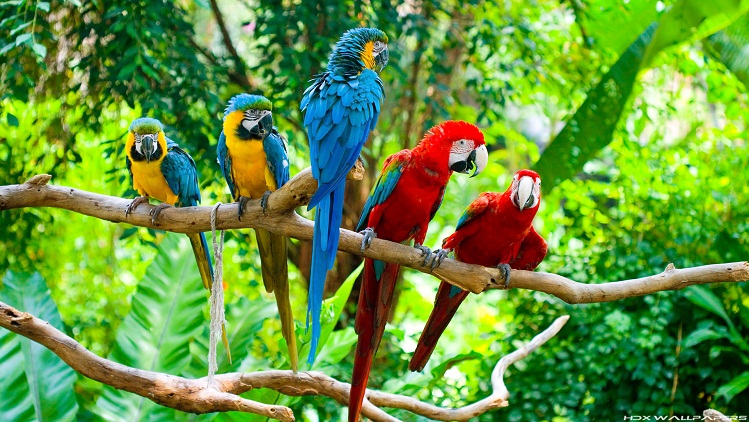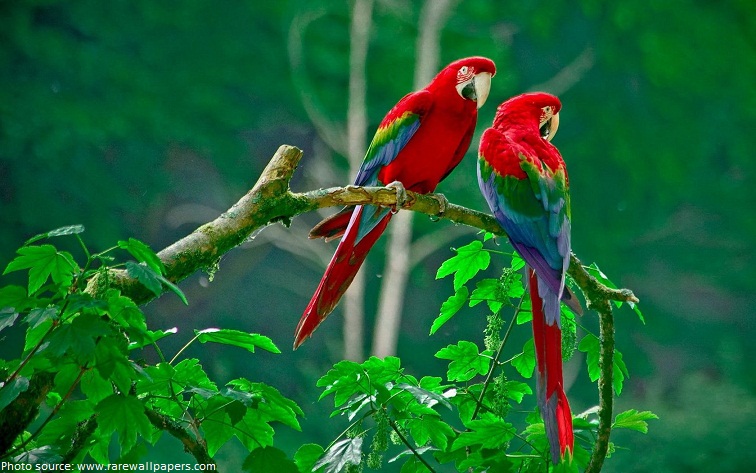The macaws is a are beautiful, brilliantly colored tropical parrot native to Central and Southern American rain forests.
There are 17 species of macaws, and several are endangered.
Macaws average lifespan in the wild is up to 60 years.
The macaw is an omnivorous animal and eat a variety of ripe and unripe fruits, nuts and seeds, flowers, leaves, and stems of plants, and sources of protein like insects and snails.
The largest and heaviest is hyacinth macaw (Anodorhynchus hyacinthinus), 1 meter (39.4 inches) tall and has an enormous wingspan of more than 127 cm (4 ft ). Weight from 1,435 to 1,695 grams (3 to 3.7 pounds).
The smallest and lightest is red-shouldered macaw (Diopsittaca nobilis), 30 centimeters (11.8 inches ) tall and weight from 129 to 169 grams (4.5 to 5.9 ounces).
Their large, strong, curved beaks are designed to crush nuts and seeds. Their strong, agile toes are used like hands to grasp things.
Loud, screeching and squawking voices help make their presence known in dense rain forests.
Macaws are built to fly through the trees in the forest, with a streamlined body and tail shape and wings that don’t flap deeply.
When they come in for a landing, they drop their tail and feet downward and use their wings like brakes to slow down before grasping a perch with their feet.
Macaws are social birds that often gather in flocks of 10 to 30 individuals.
Flocks sleep in the trees at night, and in the morning they may fly long distances to find food.
They usually wake before dawn, preening their feathers and calling to one another, perhaps communicating where they are and what they plan to do next.
Macaws typically mate for life. They not only breed with, but also share food with their mates and enjoy mutual grooming.
The bond is so strong that even when the pair flies with a large flock, the two stay close together,
with their wings almost touching.
Most macaw pairs breed once a year, and the female lays her eggs in a nest inside a tree hollow or in a dirt hollow on a cliff face.
In breeding season, mothers incubate eggs while fathers hunt and bring food back to the nest.
Once chicks hatch, both parents bring them food. Macaw chicks are helpless at first. Their eyes remain shut for several days, and they are sparsely covered in downy feathers, so they need their parents’ care until they grow their plumage, at about 10 weeks of age.
Many times chicks in the same nest compete for food, and most often only the older, stronger chick survives. The fledglings are clumsy at first as they learn to fly, at about three months of age, but once they get the hang of it, they start flying with the adults to forage for food.
Macaws are intelligent and curious birds that like to explore and keep busy. They are very aware of their
surroundings, which is necessary to keep watch for predators.
Their bright colors, which seem bold and conspicuous to us but actually blend in well with the green leaves, red and yellow fruits, and bluish shadows of the forest homes.
Macaws are well known to humans in the areas in which they inhabit and have been known to be hunted by local tribesmen for their brightly colored feathers.
These playful birds are popular pets, and many are illegally trapped for that trade.
The rain forest homes of many species are also disappearing at an alarming rate.




